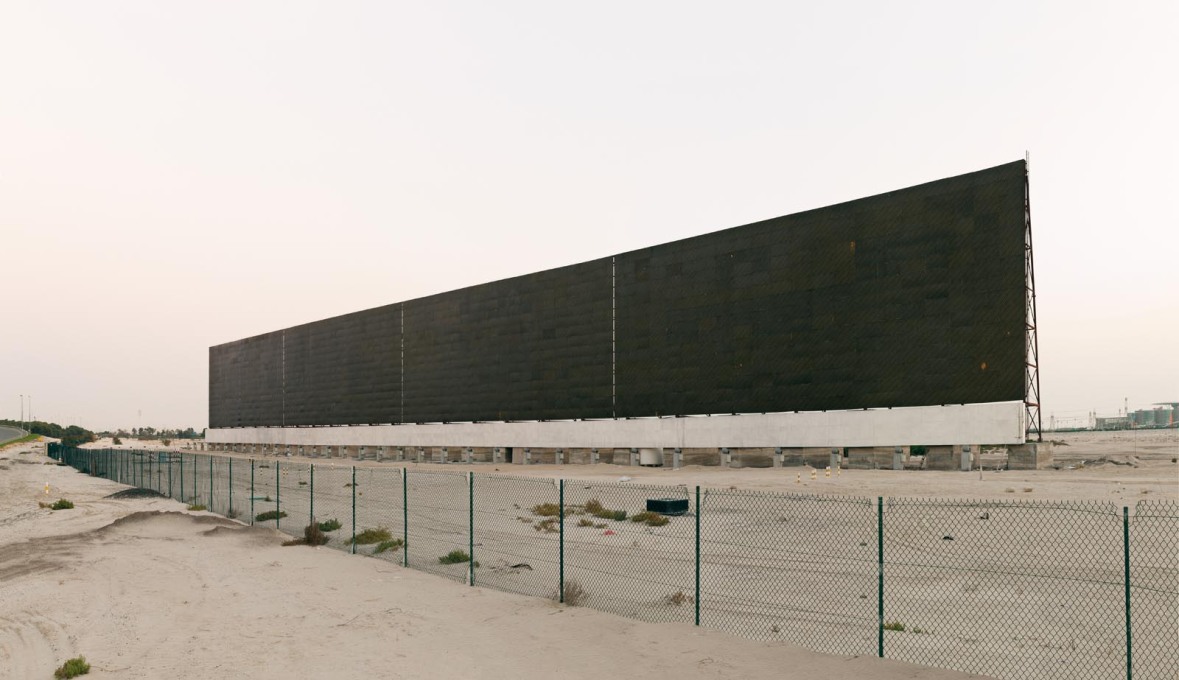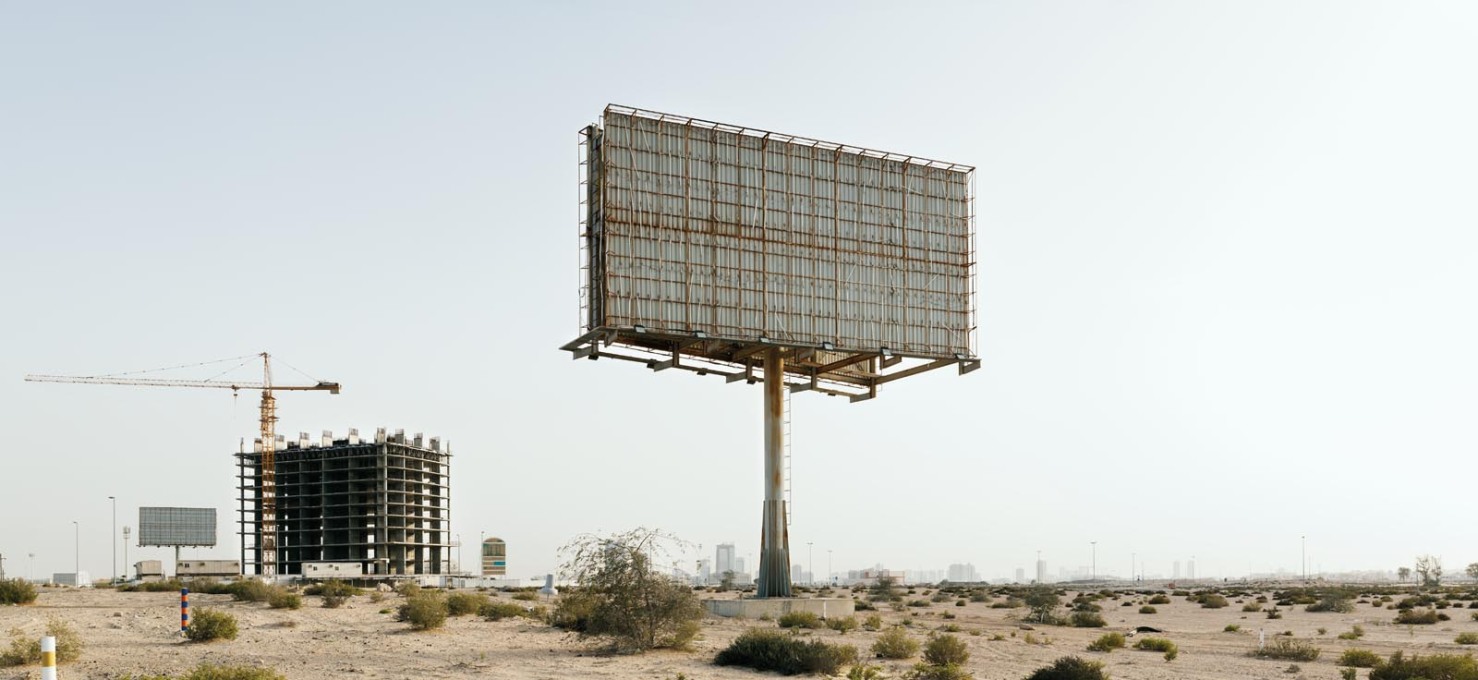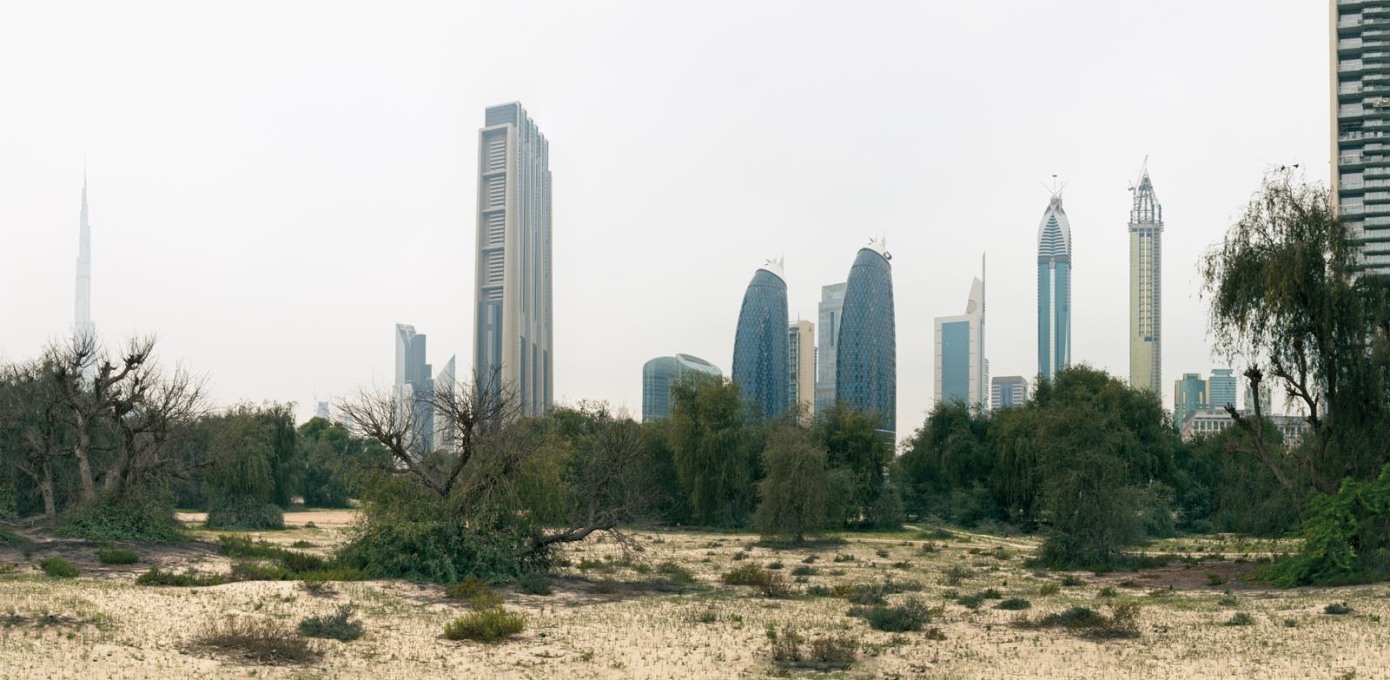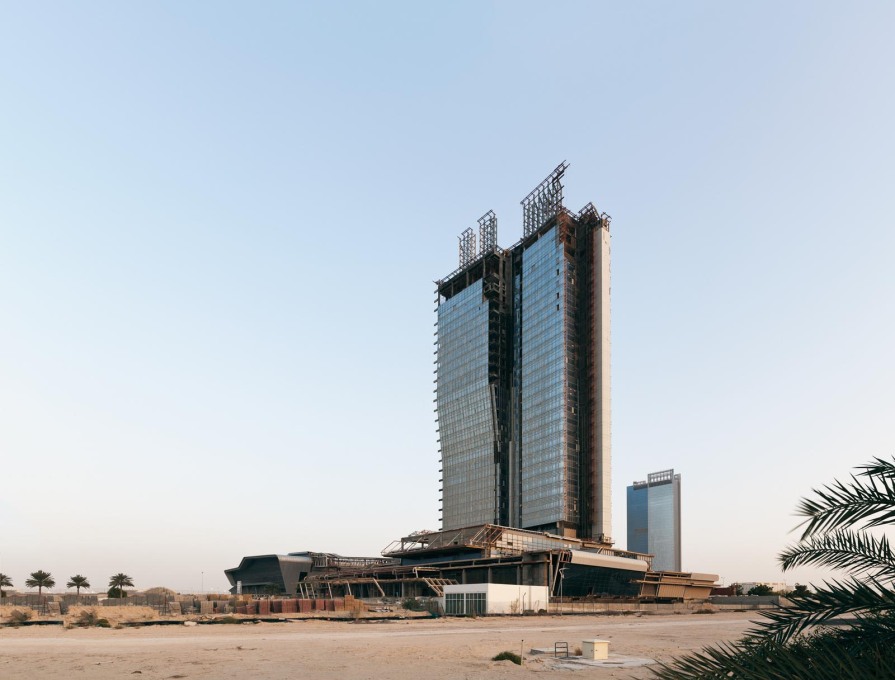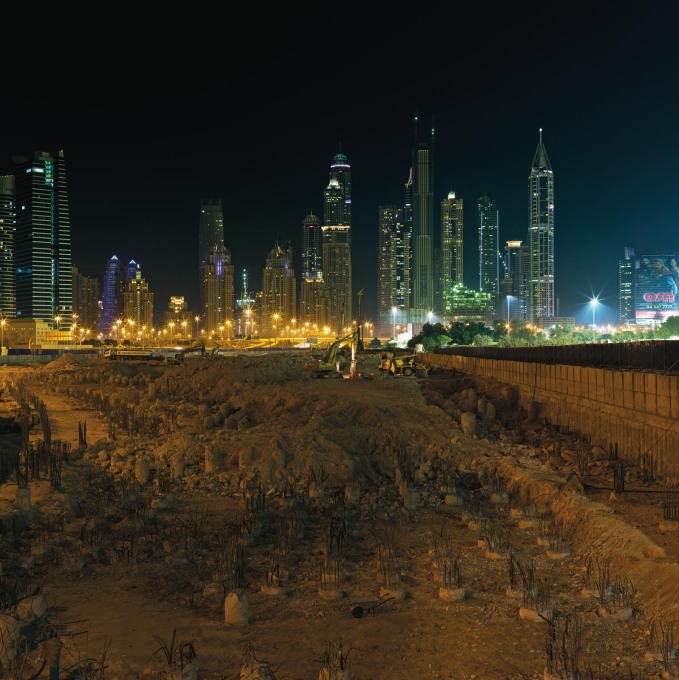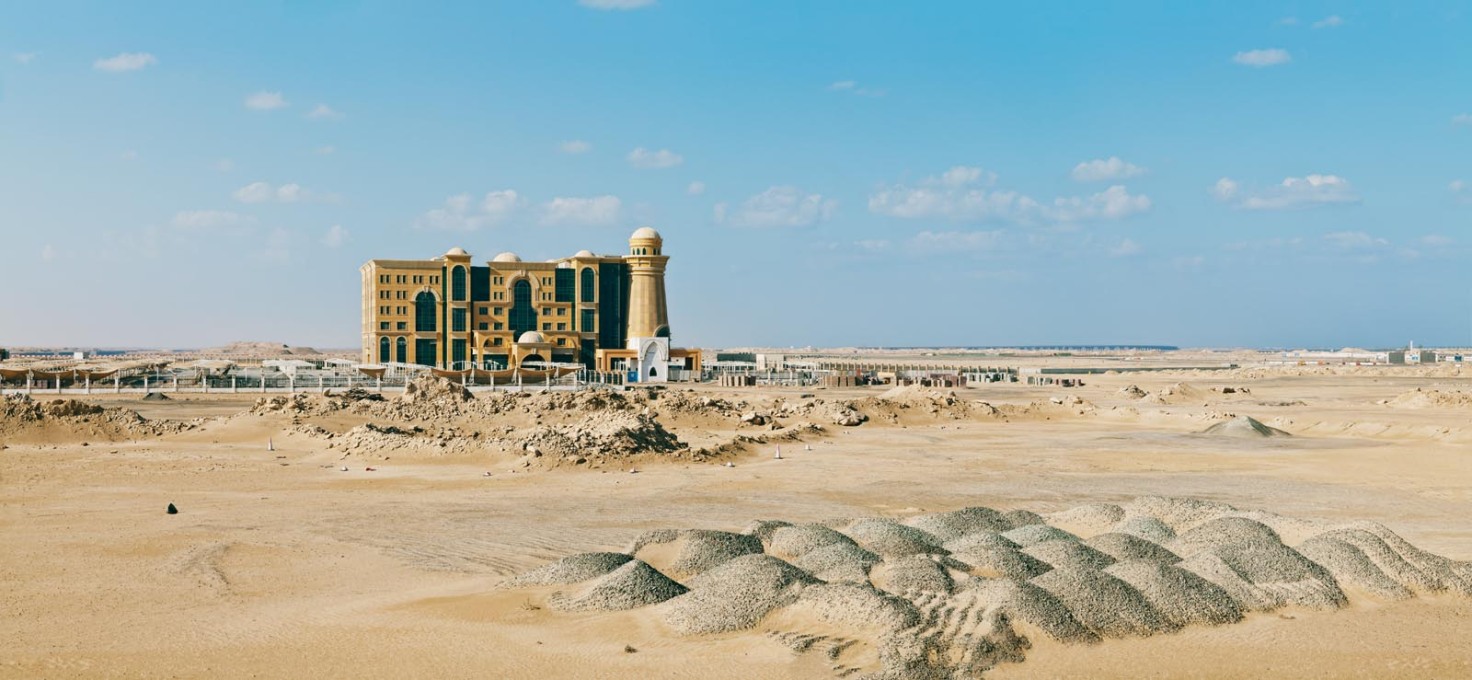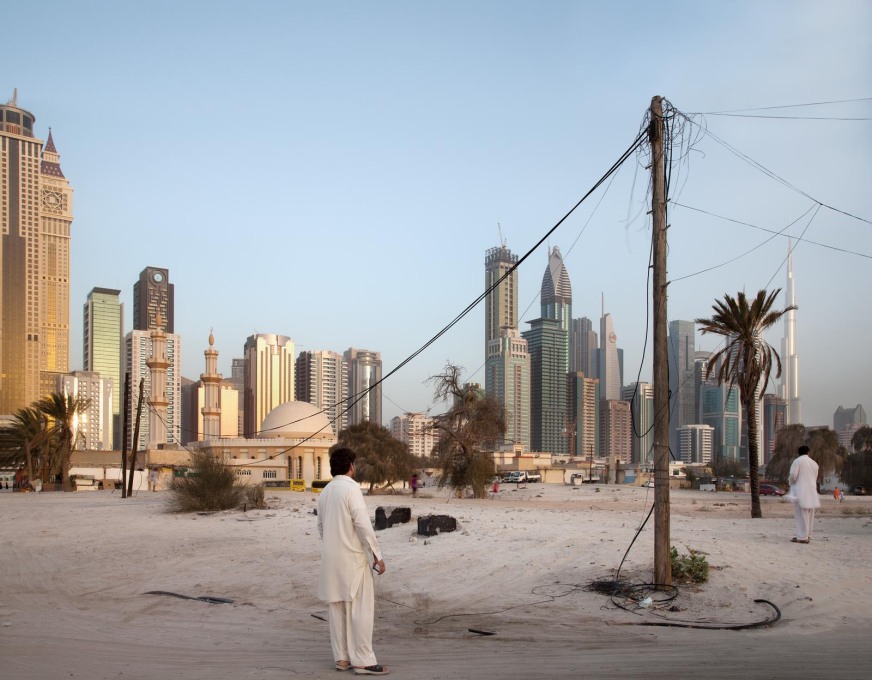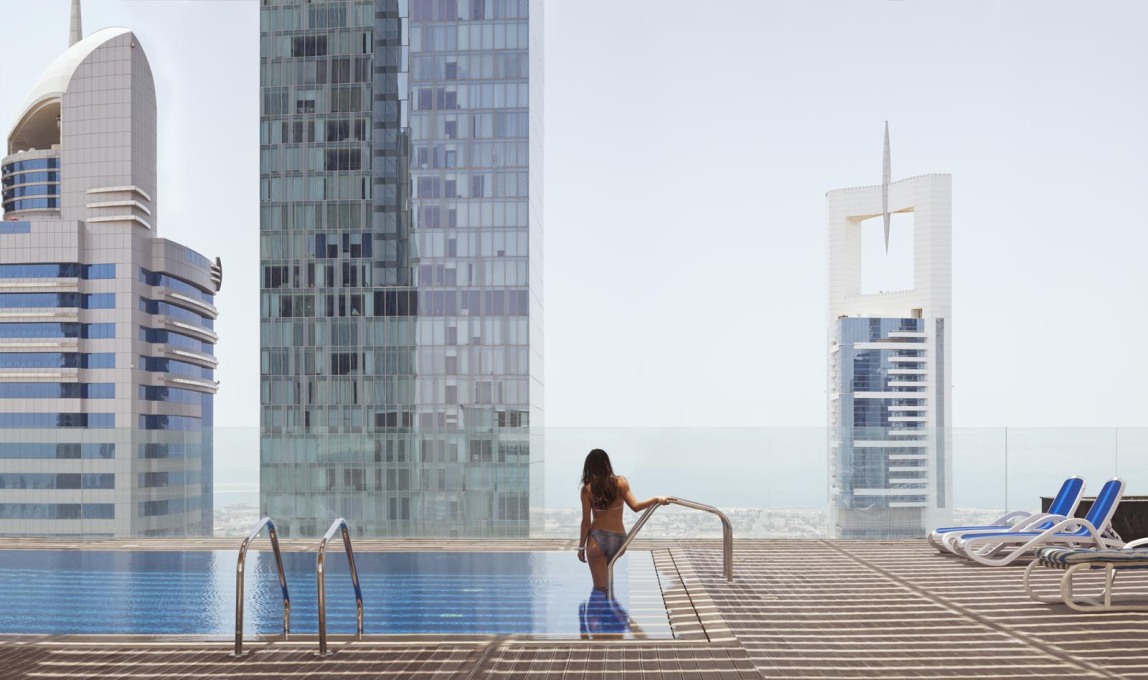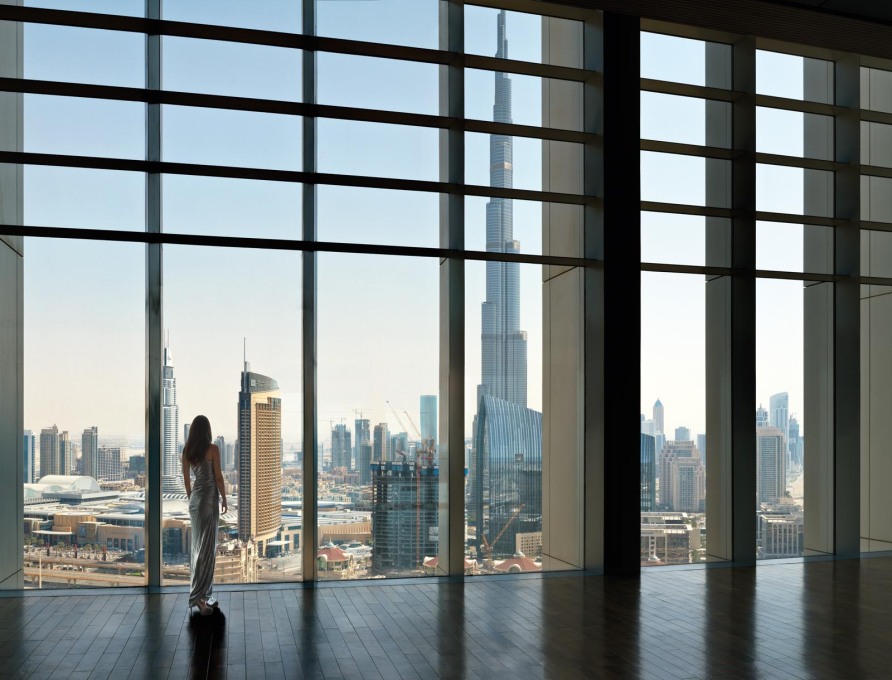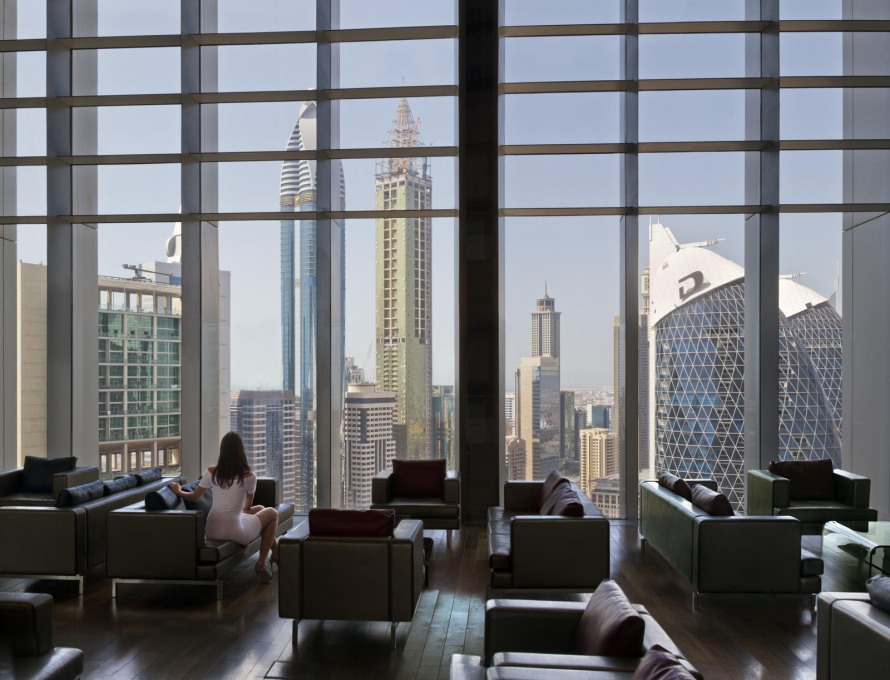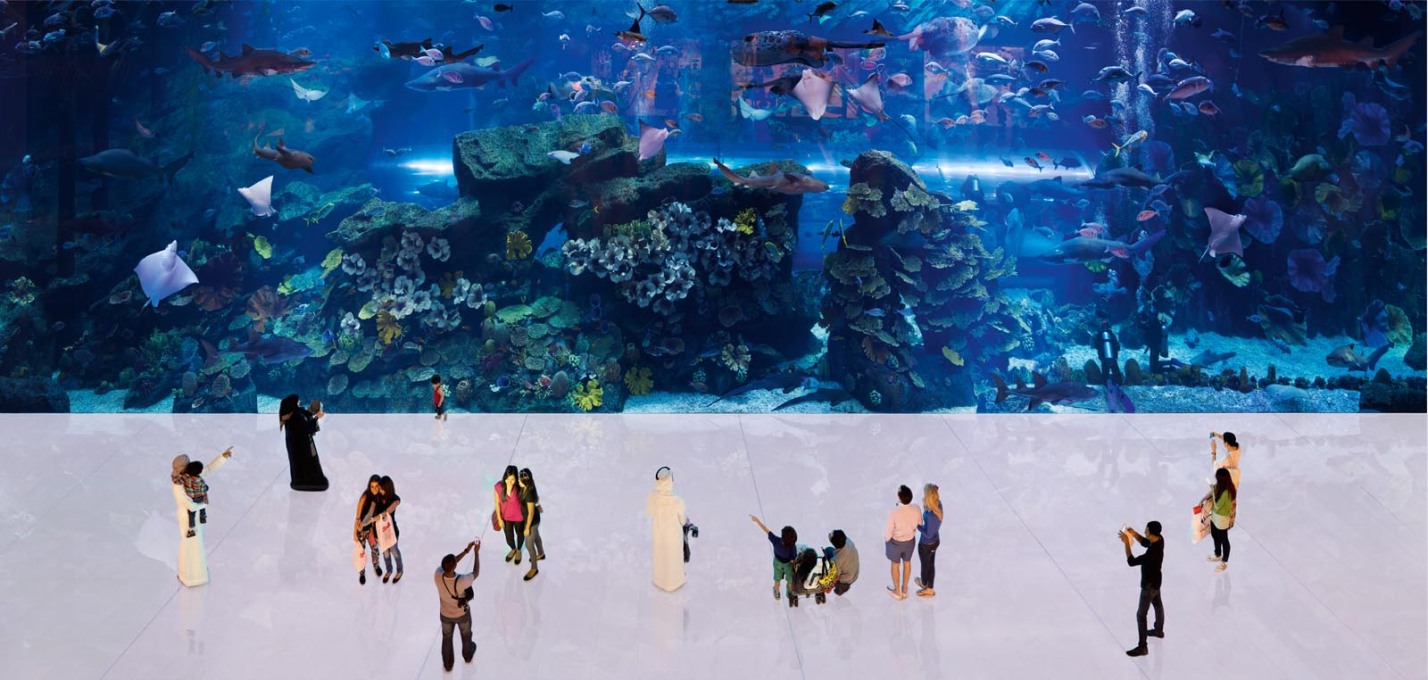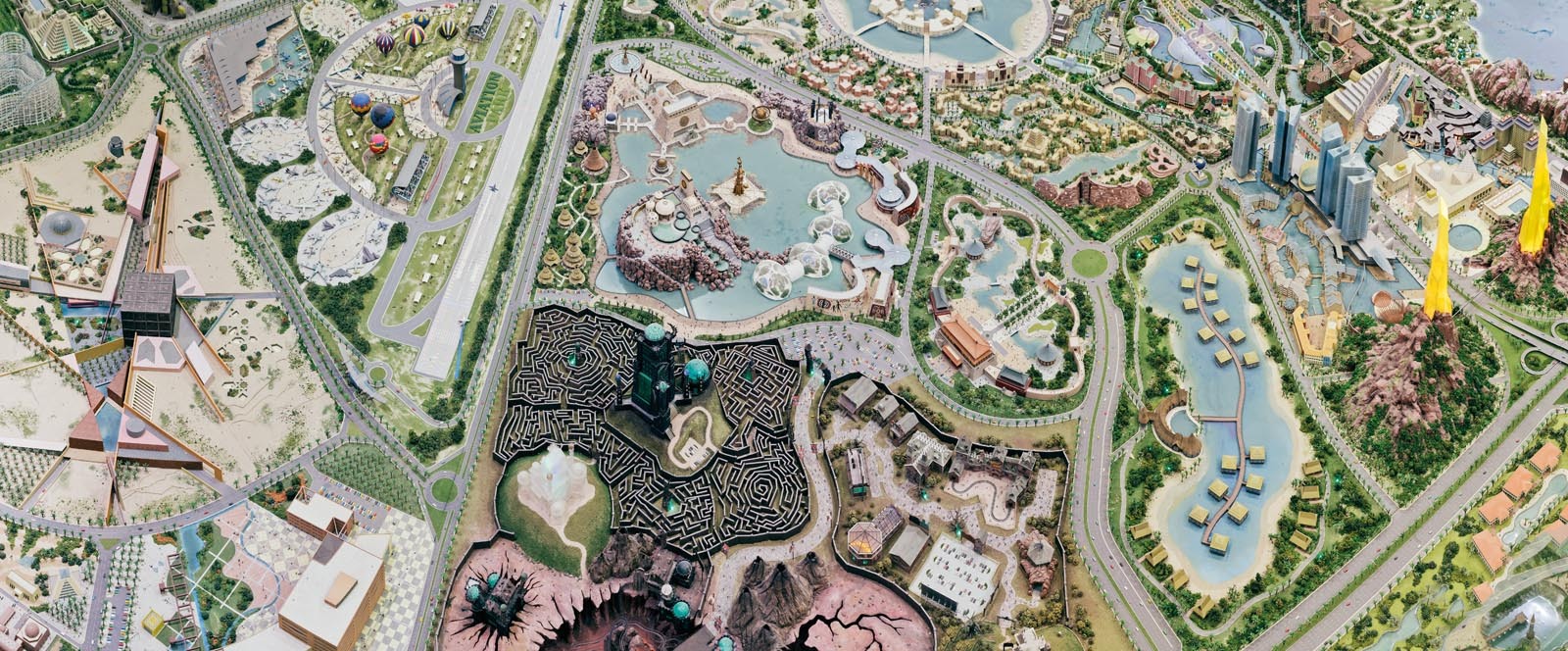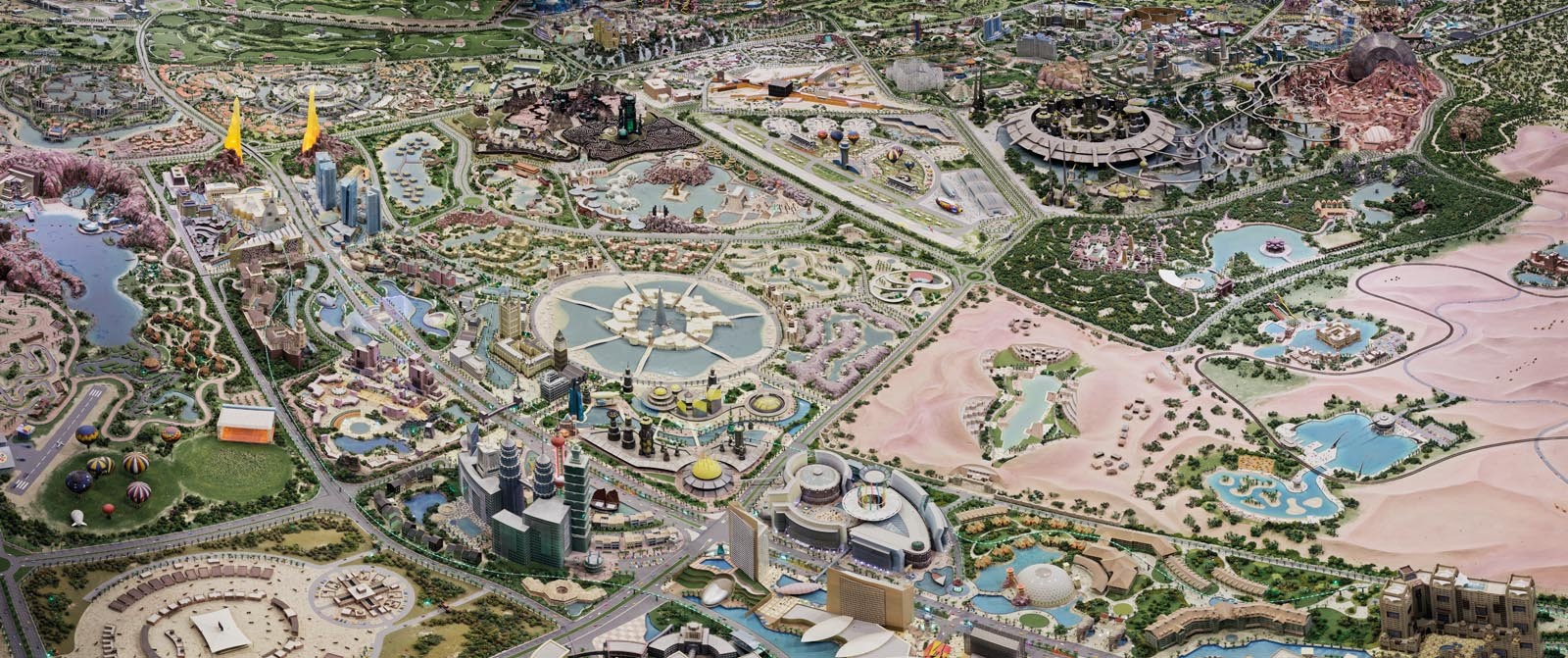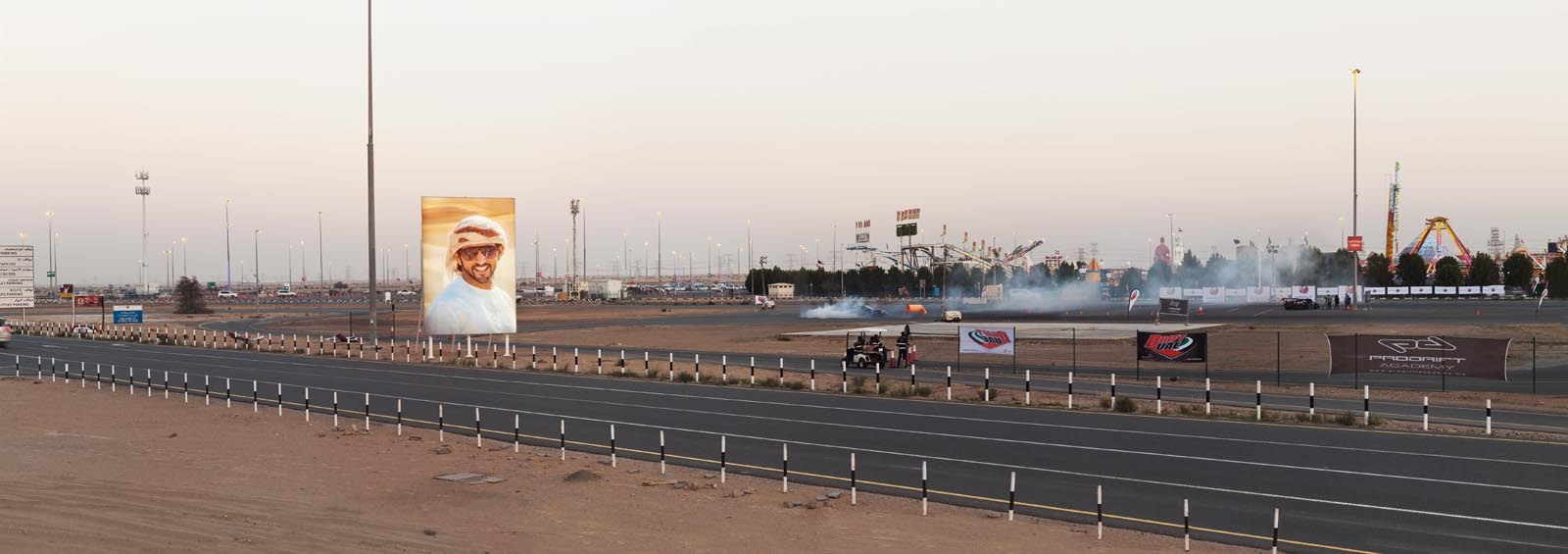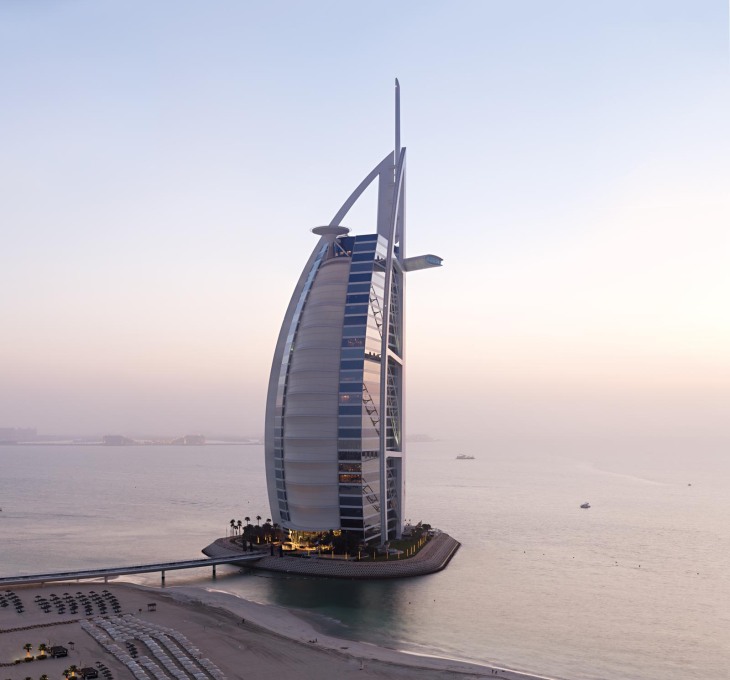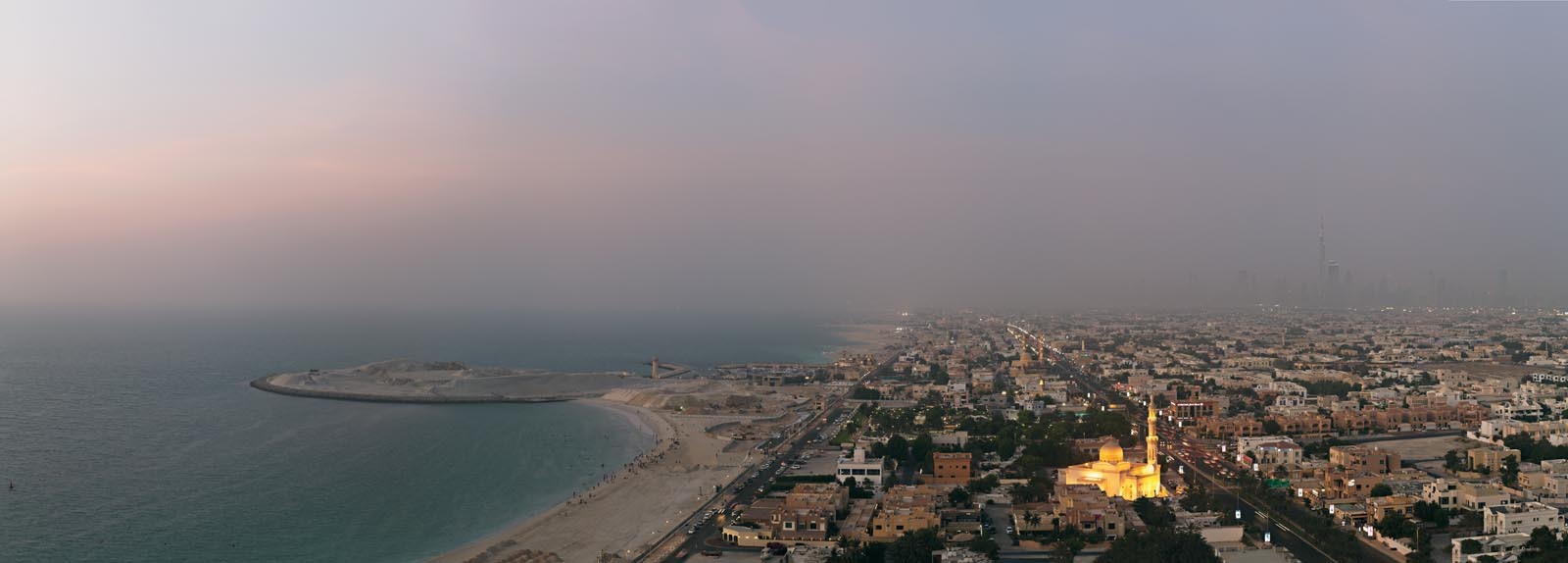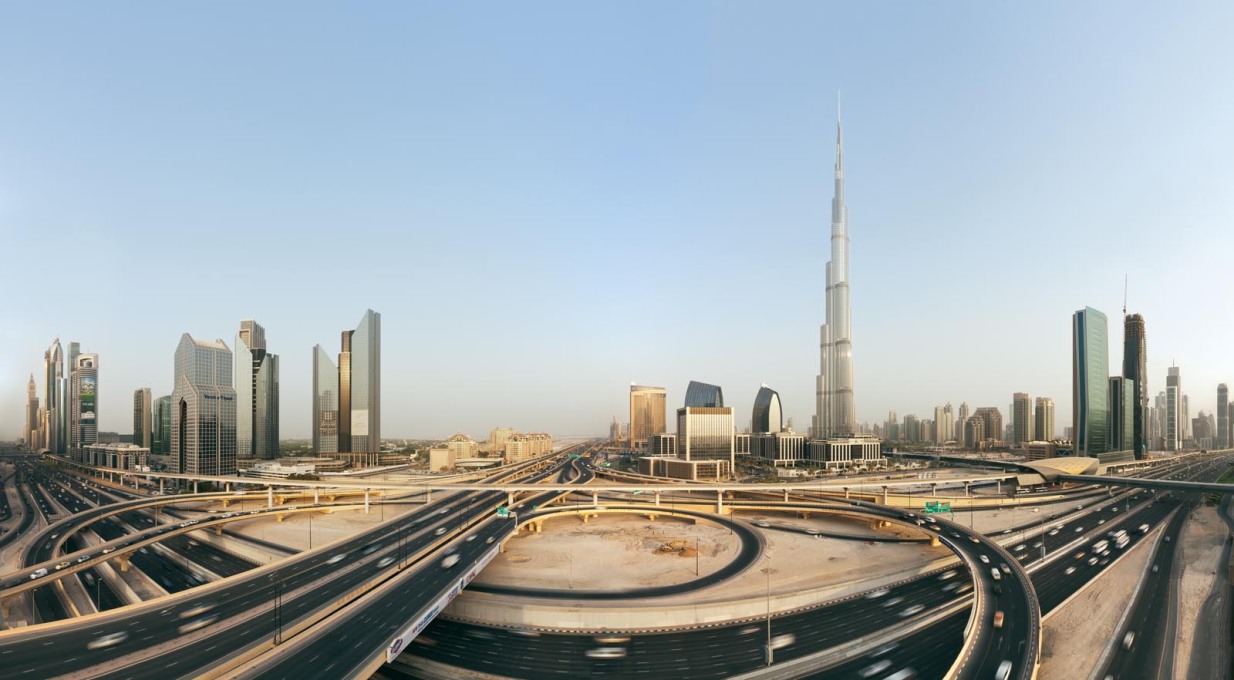The Swiss architecture historian and newly appointed chief curator of architecture and design at the New York MoMA, Martino Stierli, recently wrote an essay about a six-year Dubai photography project by German photographer Tor Seidel. Originally intended for inclusion in Seidel’s new book about the series, The Dubai, Stierli’s essay, he says, was rejected for being “too opinionated and politically controversial”. Yet taken together, Stierli’s text – published here in a slightly abridged version – and Seidel’s images merge well into an elaborate critical view of the synthetic entity known as Dubai.
When the global financial crisis reached the Gulf emirate of Dubai in 2009 and this autocratic state, that is basically run like a corporation, could only be rescued from collapse by a major injection of funds from oil-rich Abu Dhabi, a feeling veering between quiet satisfaction, spiteful schadenfreude, and unconcealed glee made the rounds in the West. To many, Dubai’s rapid urban development from small pearl-diving settlement to futuristic metropolis with a population of several millions, within only a few decades, seemed unsustainable and misdirected; an example of hollow gigantism on the part of an uncontrollable investment madness that was literally built on sand. And in fact numerous press photographs were subsequently disseminated showing gigantomaniac construction projects that had to be abruptly interrupted, awaiting an uncertain future. From the perspective of the temporarily rediscovered virtue of (financial) austerity, a development such Dubai’s was unthinkable in the long run and now it was time to pay the piper.
A moral argument was also being made accompanying the economic and ecological considerations: Was it not reprehensible that the attempt to realise this feverish dream of a brave new world was basically being carried out on the backs of a largely disenfranchised host of migrant labourers from Southeast Asia? It is hard to reconcile the modern form of serfdom operative in Dubai and the other Gulf states, with the image of a forward-looking and technologically advanced society that the glossy brochures and billboards convey, advertising Dubai as a modern trade centre for the globalised world of the twenty-first century. Behind its highly polished surfaces, Dubai has a less attractive dark side that visitors almost never get to see. It is in fact quite easy to criticise the political and economic system on which Dubai is founded. Less comfortable is the thought that the Dubai model is so passionately despised and hated primarily because Dubai, with its phenomenal dynamics, holds up a mirror to industrial societies in the West and to their own unstated aspirations.
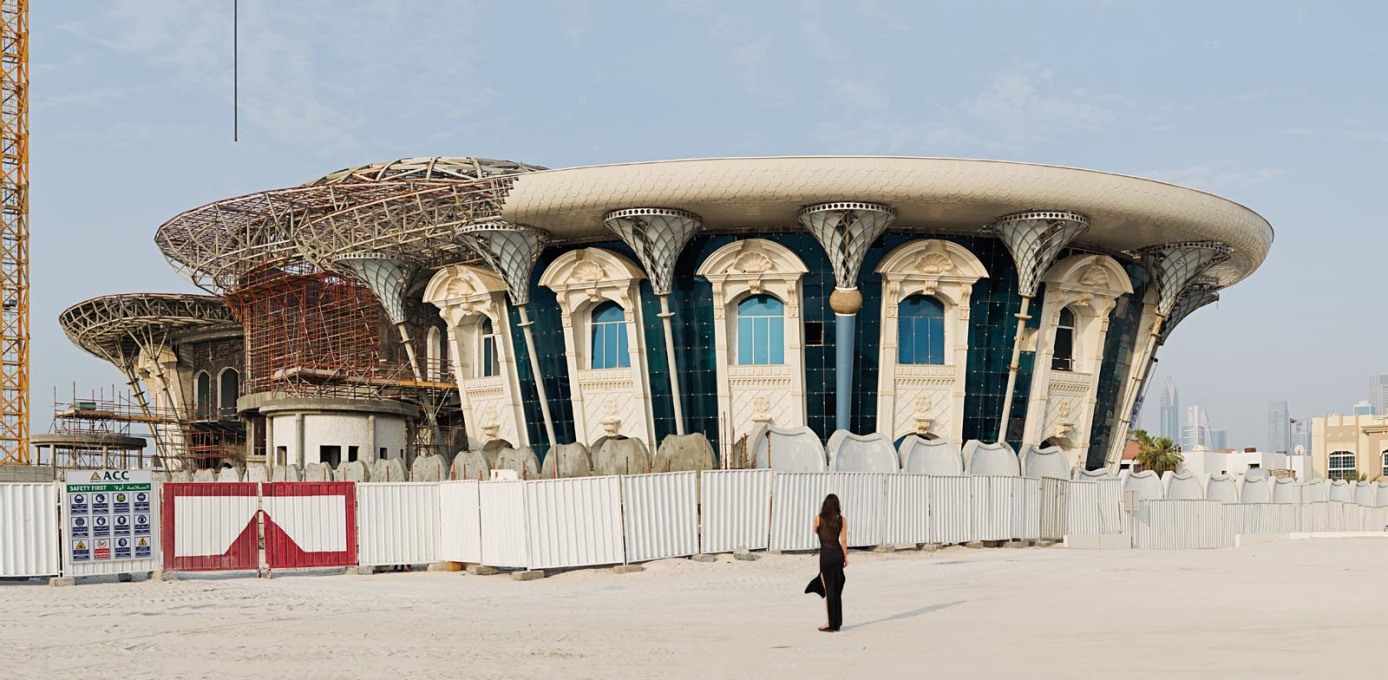
Moments of Irritation
German photographer Tor Seidel’s pictures here were taken between 2008 and 2014 – before, during, and after Dubai’s financial crisis. His photographs are to a certain extent documents of an extreme situation. However, it would be shortsighted to label Seidel’s photographs as just contemporary records or as quasi scientific tools of a visual urban analysis, although they by all means are. I would like to suggest that these impressive photographs – digitally reworked in an elaborate process – be read instead as an artistic examination of the visual aesthetics and codes of which Dubai’s “official” cityscape makes use in its well-known suggestive visualisations. To the extent that Seidel consciously deals with such strategies of visual seduction and counteracts them in his own pictures, he makes room for a critical reflection that viewers are invited to pursue. At first sight, Seidel’s photographs lend themselves to aesthetically motivated contemplation. However the subtle irritations in his pictorial compositions also open up a critical discursive space..
Examples of such moments of irritation are the numerous photographs depicting the construction sites of ambitious building projects that the crisis brought to a halt. The half-finished objects hover in curious limbo between the desire to be completed and the state of anticipated ruins. Yet in the meantime, numerous skyscrapers begun before the financial crisis have recently been completed as Dubai currently undergoes a guarded second (financial) spring. Seidel’s more recent photographs provide evidence of this development as well.
Other photographs, by contrast, give an almost post-apocalyptic impression, for example the aerial view of Dubai’s so-called Business Bay district where the skyscrapers’ half-completed concrete skeletons dissolve in a murky pool of sand and fog. No less suggestive is a photo of the Tijara Town project that was stopped in 2009. Here, concrete pillars crowned by reinforcement steel protrude from the desert floor alongside a few scattered bushes and shrubs that managed to recapture a piece of living space for themselves in this inhospitable environment. Pictures like this have a certain archaeological quality. The anticipated ruins appear like documents of a long-extinct civilisation that sought out one of the most ecologically precarious spots on Earth to build its monuments: the desert of the Arabian Peninsula. Incidentally, this fact goes a long way toward explaining the extreme artificiality Dubai is regularly reproached for: the city in the desert is exposed to an ecosystem that is quintessentially hostile to life and it can only be contained by high technology.
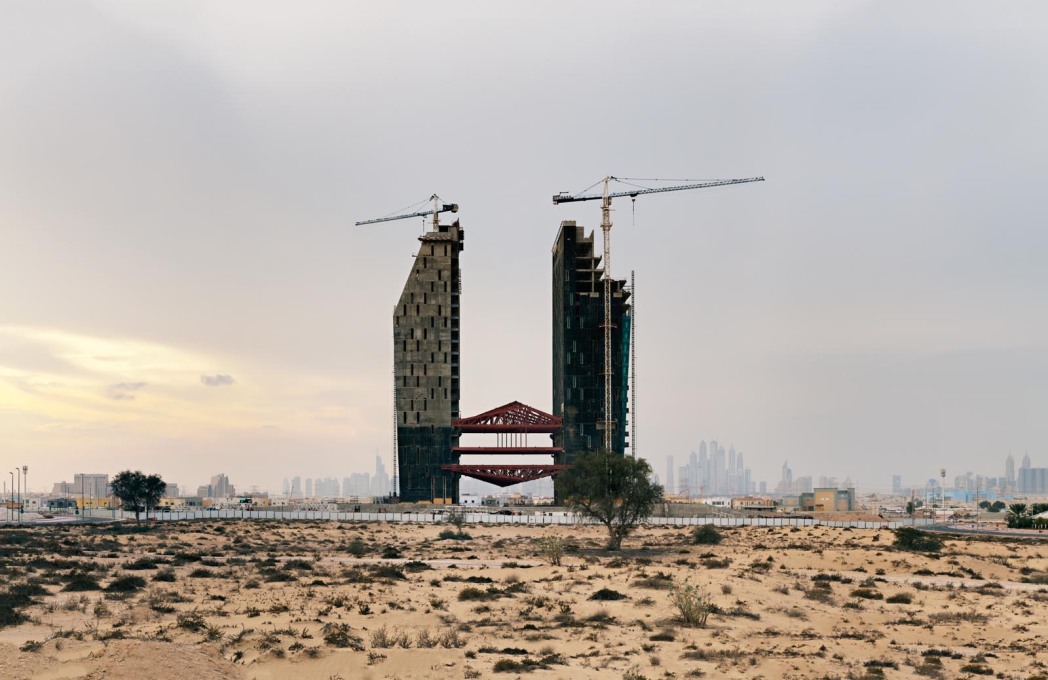
Urbanism from Above
Everything here is extremely artificial. This characteristic is nowhere better expressed than in the (indoor) photographs of the gigantic aquarium in the equally gigantic Dubai Mall or the ski slope in the Mall of the Emirates – two enterprises, as large as small cities, that effortlessly accomplish the transition from mere luxurious shopping centres to full-fledged amusement parks. These photographs simultaneously represent counter-images to the construction ruins, celebrating, as they do, Dubai’s unbroken optimistic view of the future.
Perhaps even more impressive in this regard is the shot of the cyclopean bridge piers built for the development of the artificial Palm Jebel Ali archipelago, the construction of which has been on hold since 2009. That some of Dubai’s building projects turned out to be a bit too ambitious (at least for now) is incidentally also documented in Seidel’s photos of enormous billboards, some of which pay homage to the cult of the local ruler, but many of which have nothing to convey. As such (to freely paraphrase Marshall McLuhan), the medium has become its own message, an endless self-referential feedback loop; the blank projection surface of past and future aspirations. Palm Jebel Ali was planned after the successful completion of Palm Jumeirah; together with Palm Deira it is intended as a further artificial archipelago, created using the method of land reclamation and protruding into the Persian Gulf along the coast of Dubai. The structure of these “palms,” with their long branches lined by narrow channels of water, is owed simply to the economic rationale of gaining maximum additional beachfront with as little landfill as possible. All of the villas, meticulously placed in a row like a pearl necklace, have their own private access to the sea. The Palm Islands naturally owe their name to the view visitors have when they are seen from the air. This eye-catching strategy of iconic urban planning emblematically echoes the natural desert habitat by marshalling all available technological resources.
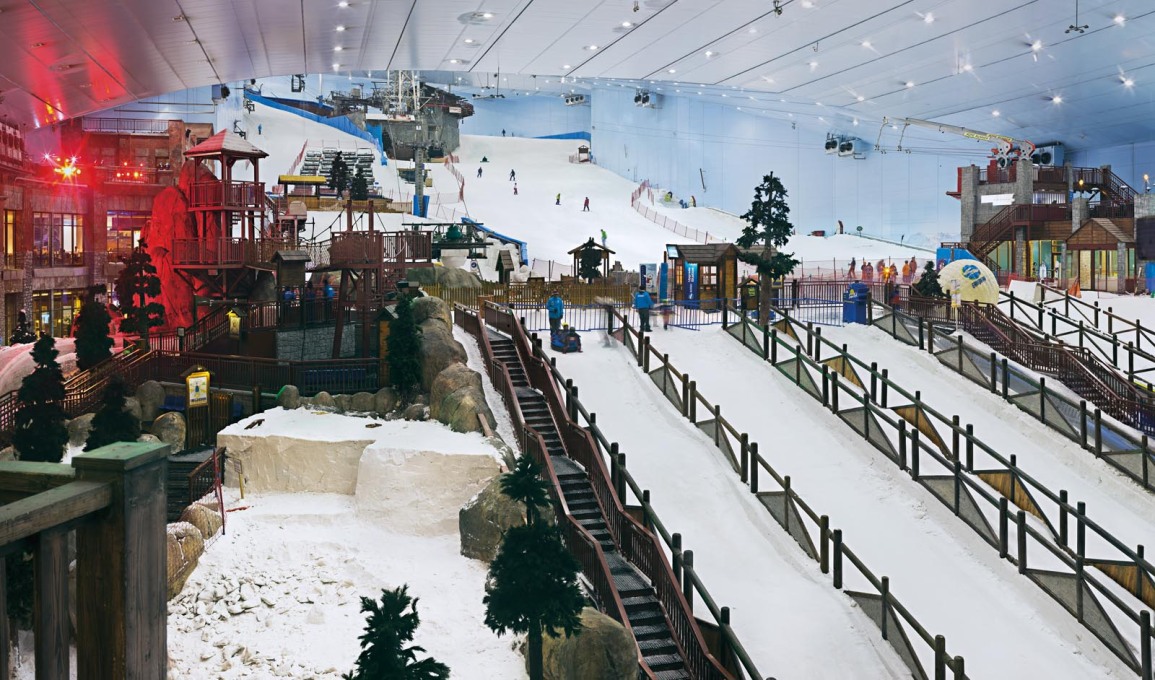
Images of Crime Scenes
The example of the Palms very clearly indicates the extent to which urban planning is conceived and realised from above, detached from reality. This model gives the planner (or the project’s invisible mastermind in the background, which in Dubai is usually the family of its ruler, Sheik Muhammad bin Raschid Al Maktum) the role of a demiurge for whom urban and regional planning represents a kind of abstract formal exercise. The logic of this approach is most clearly revealed in Seidel’s model photographs of the gigantic “Dubailand” project, only fragments of which have been realised to date. The aerial perspective, particularly in Dubai, has become an instrument of planning and design with which entire tracts of land are shaped according to the imaginations of potent investors.
Tor Seidel’s Dubai photographs are largely uninhabited. It is possible to find the odd person involved in some sort of activity on them, for example preparing billboards to accommodate posters or securing a race course. The enormous efforts involved in constructing and maintaining this imperfect artificial world (by legions of mainly Southeast Asian labourers) are not shown, yet the traces they leave behind are most definitely present. This absence turns Seidel’s pictures into photographs of crime scenes inviting the viewer to participate in a forensic reconstruction of the events as they might have occurred. Examples of this include the images of the thinly whitewashed, impoverished, one-story dwellings of the simple inhabitants that are beset by towering skyscrapers. These are pictures that clearly visualise the battle for living space in a real-estate industry fuelled by petrodollars. Or the view of the rooftops of high-rise apartment buildings showing barely furnished, temporary housing for the invisible attendants working in the building below: traces of a homeless and essentially disenfranchised, merely tolerated existence.
By restricting himself to the (re-)presentation of such urban situations, Seidel refrains from making a moral judgment. The individual photographs come together to form a complete picture that allows the viewer to take a look behind the scenes of the polished marble and glass surfaces.
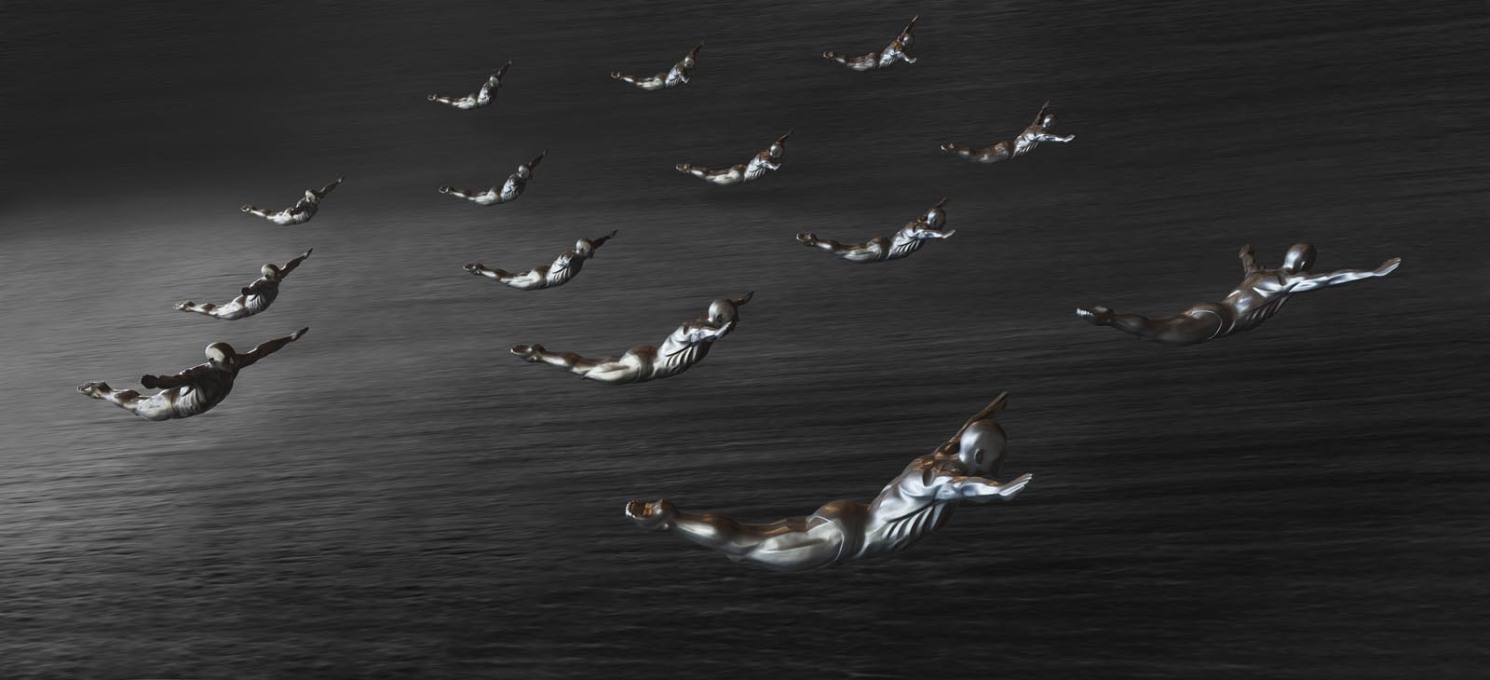
Icarus
One group of pictures, however, does not obey the precept of omitting the presence of persons, namely, the series of “staged” photographs that represent a kind of counterpoint to Seidel’s urban and architectural pictures. All figures are shown from behind, more like staff than individual personalities who might otherwise serve as a kind of identificational figure for the viewer. The visual rhetoric in evidence here seems familiar from marketing brochures for luxury lofts. But Seidel subtly circumvents this advertising aesthetic, generating in the process one of those situations of irritation discussed above. An elegant woman dressed in white depicted in a luxurious interior, for example, seems lost in a sea of seating furniture while looking out over an unreal world, instead of feeling comfortable within her own four walls. Once again Seidel photographically approaches the themes of homelessness and the uncanny from a different point of view.
Between all of this one can find, acting as confounding factor and allegory at the same time, a digital montage of The Waterfall, a sculpture at the Dubai Mall. However, unlike in the original arrangement at the shopping centre, the multiplied diving figure in Seidel’s picture does not plunge down the waterfall but seems to hover, with outstretched arms, over an indefinable surface. It recalls the dream of flight and Icarus, who, overcome by high-flying ambitions, flew too close to the sun and paid the price for his hubris by plunging into the sea. Resembling avatars, the perfect figures could easily be the outcome of genetic engineering as well, just as Dubai is ultimately a transmutation of what we used to call a city. Brave new world.
- Martino Stierli is the new Philip Johnson Chief Curator of Architecture and Design at the Museum of Modern Art, New York.
- Tor Seidel is a photographer based in Berlin and Dubai. www.torseidel.de
Tor Seidel: The Dubai with texts by Nadine Barth, Dominic Wanders, Hatje Cantz, 2014
ISBN 978-3-7757-3856-9




